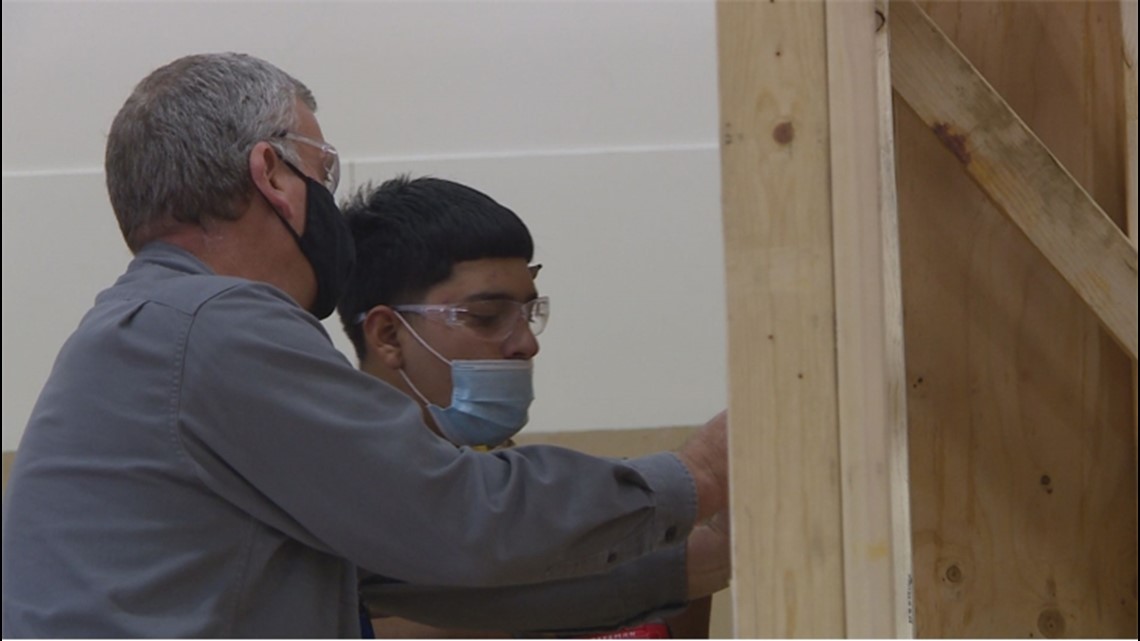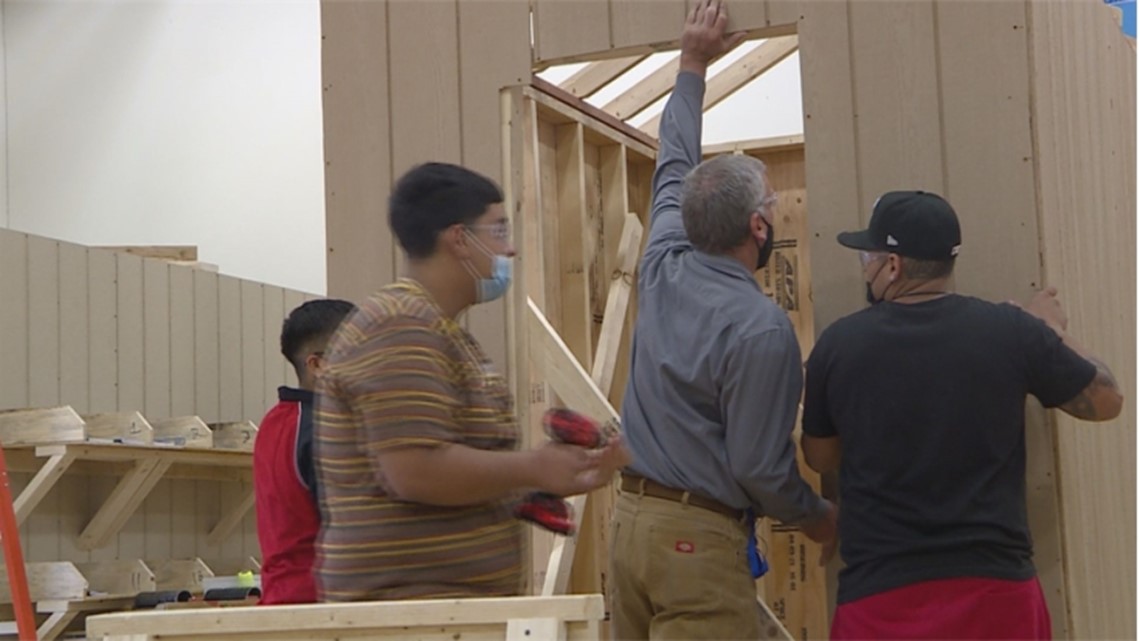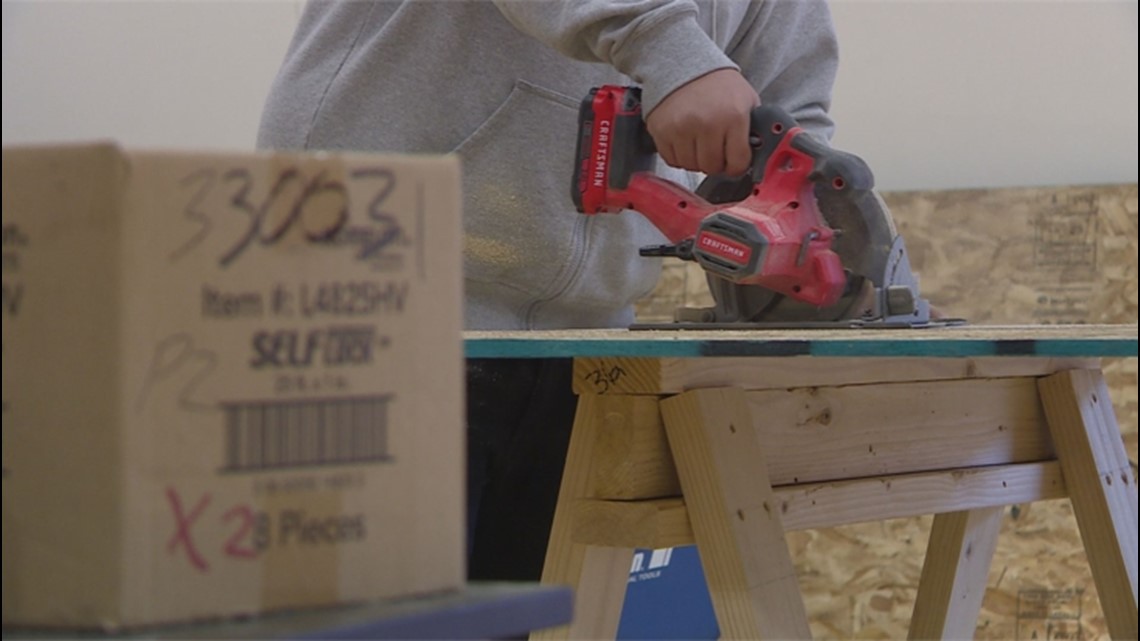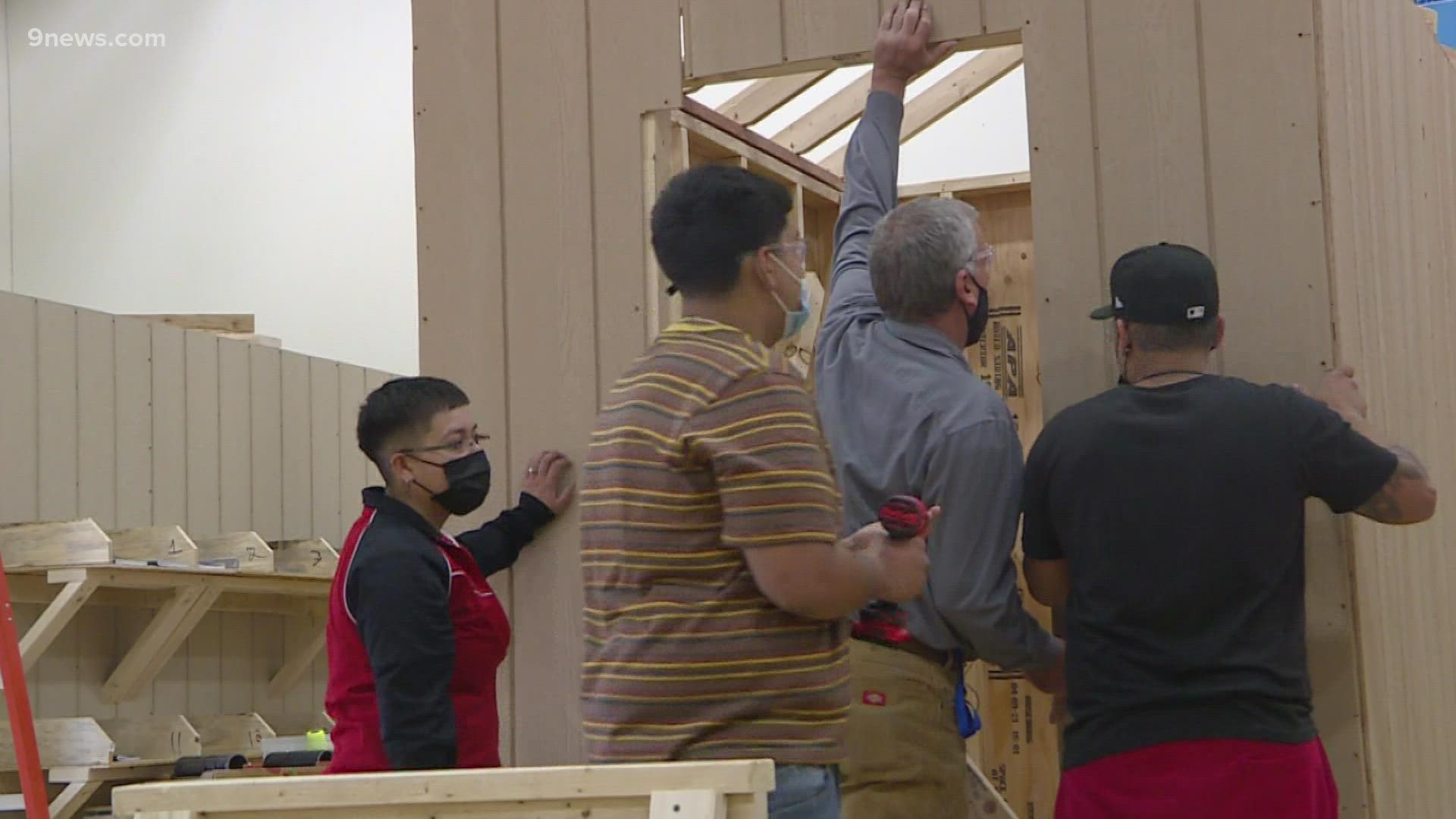DENVER — Labor shortages have taken a toll on many industries, and in a growing city, construction jobs are no exception.
Now, city leaders are looking to get more people into the construction industry through Denver's high schools.
This month, the Denver City Council approved the establishment of a new fund for their Construction Careers Program, which supports programs that develop the construction talent pipeline in Denver.
“There’s sometimes a gap between in-class training and on the job training. And this helps close that gap," said Marcus Johnson, a project manager for Denver's Workforce Development Program. He also oversees the career program.
According to a June report by the U.S. Chamber of Commerce, 88% of contractors reported moderate-to-high levels of difficulty finding skilled workers.
Nearly half of those reported having a "high level of difficulty."
In Denver, experts said the construction labor shortage is present, but hope the expansion of the program makes a difference.


What the expansion looks like
Right now in Denver, just four schools utilize the program.
“Specifically, what we are aiming to do is introduce area youth to careers in construction specifically in the skill trades," Johnson said.
The courses offered through the program give basic fundamental skills around using certain tools, materials and construction projects.
When a student goes through the program, they're able to receive nationally recognized certifications for skill trades. Johnson also said it gives students a leg up to getting an internship with a construction company for example, even before graduation.
“And more importantly, a working relationship with an employer," he said.
With the approval of funding for the program, the money would be collected through permitting fees (with an opt-out option).
Operating costs for a course of this nature costs around $30,000, according to Johnson.
He hopes that if contributions come from at least 60% of residential and commercial permits, $375,000 would be put into the fund. If 100% were to contribute, he estimates up to $625,000 could be collected.
“Its really gonna provide them with a guided option," Johnson said.
Johnson hopes for the fund to begin on Feb. 2, 2022, with the actual distribution of funds to occur in the fall of 2022 when the new school year begins.
Initially, the fund looks to stabilize the program currently in use, then expand, depending on the funds collected.
Johnson adds that the course, because it's for college credit, is offered to any students enrolled in Denver Public Schools, and they can be transported to a school that offers the course.


What the course looks like now
If you step inside Legacy Options High School in Denver, the volume gets louder as you get closer to the 'Fundamentals of Construction.'
On Tuesday, students could be seen assembling a large shed for a client. One student was constructing the ceiling fan, while others were putting together the siding for the building.
The class is able to be accessed through the Construction Careers Program, and is a college credit class through Emily Griffith Technical College.
The school first started offering the course this past school year.
“This is valuable to them - the more they learn here, the more they can apply it out there in the workforce. And this will give them an opportunity to deal with tools, materials, and get used to using them," said Weston Harmon, the instructor of the course. “That way they can operate the drills, the impacts, the saws …it gives them an opportunity to measure and cut."
Students also work with a wide array of measurement tools, in order to provide a foundational education in construction.
“I do think they need more all over the world - the Denver area for sure," Harmon said, referring to the need of the program. “You can make some good money as you work up the ladder.”


George Washington High School is another Denver-area school that has access to the program, and implemented it through a math course called "Geometry in Construction."
They too started the course this past school year.
Assistant Principal Gideon Geisel explained that the idea behind the course was to have a math course that would be paired with a construction course, to see the mathematical concepts come to life through hands-on building.
They also partnered with Emily Griffith Technical College, which allows them to have a select number of students taking the construction lab as a college course and will then earn a mini-certification in Construction Essentials.
The longer term goal is to look into possibly summer time programming for students to continue their learning and possibly earn a full certification in construction that will allow students to work on a job site, Geisel said.
"What this program provides is options, especially if you are passionate about construction," Geisel wrote in an email. "If we are able to provide programming that aligns with students interests and passions and can lead to certification, then we are doing our jobs!"


Filling the pipeline, to meet demand
According to the U.S. Bureau of Labor Statistics the overall emplyoment of constructions workers is projected to grow 7% between 2020 and 2030.
Right now, Eric Holt, a Professor at the University of Denver's Burns School of Real Estate & Construction Management, says the job market right now is the worst he's seen during his career.
"It's the number one issue that home builders and commercial construction has been facing in the industry even before the pandemic. It all started back in the 2006, 2011 housing market crash, and it has been the number one top issue since - pandemic has only exasperated that problem," he said.
After the crash, he explained that a lot of people left construction jobs, or were laid off.
"And so then you get away from the fact that trades have been taken out of the high school. A lot of students don't see construction as a viable career. A lot of parents of students that were in construction like, ‘I don't want my kids to do that.’ So there's just all these different challenges that have led to this humongous problem," he said.
What this all translates to now is a longer time to get projects finished, Holt explained.
"What should be a three to six month project now becomes a nine to 12 to to 15 months," he said.
Another impact he says, is the pricing of construction projects impacted by supply of labor.
"Right now, the labor in the trades, they're driving the ship and setting the pricing of the market. Before the crash, the builders could say, 'Hey, this is what we're going to pay for framing. This is we're going to pay for drywall.' And there were enough trades that they would fight over that. And so we had, you know, such a supply of the trades that you could push pricing down. Well, now there's such a lack of supply, the trades, it's pushing pricing up and builders just have to pay for it," he said. "So it increases the cost of the house cost of the project. It increases the cycle time which takes longer, which means you're carrying cost and your interest on the loans take longer..."
Overall, he's hopeful the expansion of the careers program will help make a dent in the labor shortage issue, but also believe it won't fix the issue overnight.
"So by bringing trades back into the schools, it elevates the trades and elevates the talent the partnership needed between home builders and those that install and physically do the work. It shows everyone that it's not just swinging hammers and playing out in the dirt, so it's going to add a level of professionalism. It's going to draw people back into the industry, especially the younger generation that is, you know, highly needed," he said. "And it's because of the new technology and construction, because of the new processes, the new the automation. We need a higher level of skill in the new generation. So it's going to be a win win for the industry."

